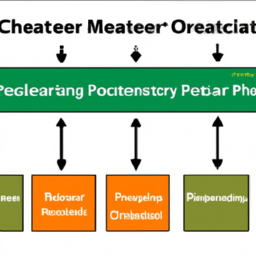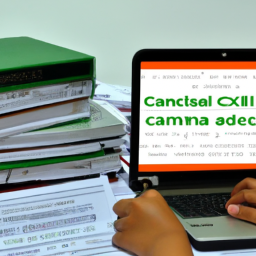Imagine you are the captain of a ship, embarking on a voyage through treacherous waters. Your success depends not only on your navigational skills, but also on the quality of your vessel. Just as a sturdy ship is essential for a safe and successful journey, effective project quality management is crucial for the success of any project.
It is the compass that ensures your project stays on course and delivers the desired outcomes. In this article, we will explore the 7 key principles for effective project quality management. By adhering to these principles, you will be equipped with the tools and strategies necessary to establish clear quality objectives, develop a comprehensive quality management plan, implement robust quality assurance processes, foster effective communication, proactively manage risks, and continuously improve the quality of your project.
So, grab your captain’s hat and let’s set sail on a journey towards project excellence.
Key Takeaways
- Clear quality objectives provide direction and purpose
- Developing a comprehensive quality management plan is essential
- Implementing robust quality assurance processes minimizes the risk of defects and failures
- Continuous improvement is essential for enhancing project performance
Establish Clear Quality Objectives
You need to establish clear quality objectives that will serve as a guiding star, leading you through the project like a lighthouse in the stormy waters of uncertainty.
Clear quality objectives provide a clear direction and purpose for the project, ensuring that everyone involved understands what needs to be achieved. These objectives should be specific, measurable, achievable, relevant, and time-bound.
By defining clear quality metrics, you can monitor progress and assess whether the project is meeting its objectives. Regularly measuring and monitoring progress against these metrics allows you to identify any issues or deviations early on, enabling you to take corrective actions and make necessary adjustments.
Establishing clear quality objectives is the first step towards developing a comprehensive quality management plan that will ensure the success of your project.
Develop a Comprehensive Quality Management Plan
Imagine crafting a comprehensive plan that ensures the highest level of quality throughout your project. Developing a comprehensive quality management plan is essential for successful project outcomes.
This plan should outline the quality management techniques and quality control measures that will be implemented to monitor and control quality throughout the project lifecycle. It should clearly define the roles and responsibilities of team members involved in quality management and establish the processes and procedures that will be followed.
The plan should also include a detailed schedule for conducting quality inspections and audits, as well as a system for tracking and resolving any identified quality issues. By creating a comprehensive quality management plan, you can proactively address potential quality concerns and ensure that quality is a top priority throughout your project.
As you move forward, it’s important to implement robust quality assurance processes to further enhance the quality of your project deliverables.
Implement Robust Quality Assurance Processes
Implementing robust quality assurance processes is crucial for ensuring the highest level of quality in your project deliverables. To achieve this, you need to implement quality metrics that effectively measure the quality of your project outputs. This will provide you with valuable insights into areas that need improvement and allow you to make informed decisions.
Additionally, conducting regular quality audits will help you identify any deviations from the established quality standards and take corrective actions promptly. By implementing robust quality assurance processes, you can minimize the risk of defects, errors, and failures in your project, ultimately leading to higher customer satisfaction and project success.
With these processes in place, you can foster effective communication among project stakeholders, ensuring that everyone is on the same page and working towards a common goal.
Foster Effective Communication
Maintain open lines of communication with your project team members to ensure that everyone is on the same page and working towards the same goals.
Encourage feedback from your team members and address any quality concerns promptly to prevent them from escalating into bigger issues.
By fostering effective communication, you can create a collaborative and supportive environment that promotes the successful delivery of high-quality projects.
Maintain open lines of communication with project team members
Foster frequent and fluid communication with project team members to ensure seamless collaboration and success. By maintaining open lines of communication, you can enhance team collaboration and promote effective leadership.
Here are three key ways to maintain open lines of communication:
-
Schedule regular team meetings to discuss project updates, address any concerns, and provide a platform for team members to share their ideas and insights.
-
Utilize communication tools such as project management software, instant messaging platforms, and video conferencing to facilitate real-time communication and ensure everyone stays connected.
-
Encourage an open-door policy where team members feel comfortable approaching you with any questions, issues, or suggestions.
Maintaining open lines of communication with your project team members is crucial to foster a collaborative environment and ensure the success of your project. It also sets the stage for the subsequent section, where we will discuss how to encourage feedback and address quality concerns promptly.
Encourage feedback and address quality concerns promptly
To ensure a successful project, you should actively seek feedback from your team members and promptly address any concerns about the quality of the work. Encouraging open communication channels will allow team members to freely express their thoughts and observations regarding the project’s quality.
Regular feedback analysis will help identify areas that require improvement, enabling you to take corrective actions promptly. By promptly addressing quality concerns, you can prevent issues from escalating and negatively impacting the project’s success.
It is essential to create a culture where team members feel comfortable providing feedback and know that their concerns will be taken seriously. This approach will not only lead to continuous quality improvement but also foster a collaborative and supportive work environment.
Transitioning into the next section about proactively managing risks, it is crucial to maintain open lines of communication to effectively address potential risks and mitigate their impact.
Proactively Manage Risks
Mitigate potential risks by identifying and addressing them proactively, ensuring a smooth and obstacle-free project journey. Risk identification is crucial to anticipate and understand potential threats that may impact the project’s quality, schedule, or budget.
It involves analyzing the project’s scope, objectives, and stakeholders’ expectations. By conducting risk assessments and brainstorming sessions, you can identify both internal and external risks. Once risks are identified, develop a comprehensive risk mitigation plan that outlines strategies to minimize their impact. This plan should include specific actions, responsible parties, and timelines.
Continuously monitor and reassess risks throughout the project’s lifecycle to stay ahead of any emerging threats. By proactively managing risks, you can safeguard the project’s quality and ensure its successful completion.
Transitioning into the subsequent section about ‘continuously improve quality,’ consider implementing lessons learned from risk management to enhance overall project performance.
Continuously Improve Quality
The team should strive to consistently enhance the project’s performance by implementing lessons learned from risk management and creating a continuous improvement cycle. This ensures that quality is continuously improved throughout the project’s lifecycle.
Here are four ways to achieve this:
- Regularly review and evaluate project processes and outcomes to identify areas for improvement.
- Encourage open communication within the team to gather feedback and suggestions for enhancing quality.
- Implement a system for capturing and documenting lessons learned from previous projects and apply them to future endeavors.
- Foster a culture of continuous learning and development by providing training and resources to team members.
By embracing continuous improvement and actively seeking ways to enhance quality, the team can ensure that the project consistently meets or exceeds the expectations of stakeholders.
Frequently Asked Questions
How can project managers ensure that quality objectives are aligned with the overall project goals?
To ensure that quality objectives are aligned with the overall project goals, project managers must address alignment challenges and actively engage stakeholders.
This involves clearly communicating the project goals and quality objectives to all stakeholders, seeking their input and feedback, and incorporating their perspectives into the decision-making process.
By actively involving stakeholders in the alignment process, project managers can ensure that quality objectives are in line with the overall project goals and meet the expectations of all involved parties.
What are some common challenges that project teams might face when developing a comprehensive quality management plan?
Developing a comprehensive quality management plan can be like navigating a maze. Challenges arise when project teams struggle to identify all potential risks and opportunities for improvement. It requires meticulous attention to detail, ensuring every aspect of the project is accounted for.
Creating a clear and concise plan is essential, as it provides a roadmap for quality objectives. By organizing and addressing these challenges head-on, project teams can overcome obstacles and deliver a successful project.
How can project teams effectively communicate quality requirements and expectations to stakeholders?
To effectively communicate quality requirements and expectations to stakeholders, you must prioritize stakeholder engagement. Begin by clearly defining the quality standards and objectives. Use concise and organized communication channels, such as regular meetings or project documentation, to convey these requirements.
Ensure that stakeholders understand the importance of meeting these expectations and the potential impact on the project’s success. Regularly update stakeholders on the progress and any changes to the quality plan, fostering open and transparent communication throughout the project.
What are some proactive measures that project managers can take to identify and manage potential risks to project quality?
To effectively manage potential risks to project quality, you must be like a skilled tightrope walker, always vigilant and ready to take proactive measures. Implement a robust risk management strategy that includes thorough risk identification, assessment, and mitigation.
Regularly assess the project’s progress and identify any potential threats to quality. Develop contingency plans and communicate them clearly to the team.
By staying proactive and prepared, you can navigate the project landscape with confidence and ensure high-quality outcomes.
What strategies can project teams use to measure and track improvements in project quality over time?
To measure the effectiveness of project quality over time, project teams can implement several strategies.
First, they can establish clear metrics and targets to track progress. This includes setting specific goals related to quality and regularly evaluating performance against these targets.
Additionally, project teams can conduct periodic audits or inspections to assess the quality of deliverables and identify areas for improvement.
Finally, collecting feedback from stakeholders and incorporating their insights can also help in measuring and tracking improvements in project quality.
Conclusion
Congratulations! You’ve successfully navigated through the principles of effective project quality management. Just like a skilled captain steering a ship through treacherous waters, you’ve learned to establish clear objectives, develop a comprehensive plan, and implement robust processes.
By fostering effective communication and proactively managing risks, you’ve become the master of your project’s destiny. And remember, just like a fine-tuned instrument, continuous improvement is the key to achieving unparalleled quality.
Keep these principles close to your heart, and watch your projects sail towards success!



















